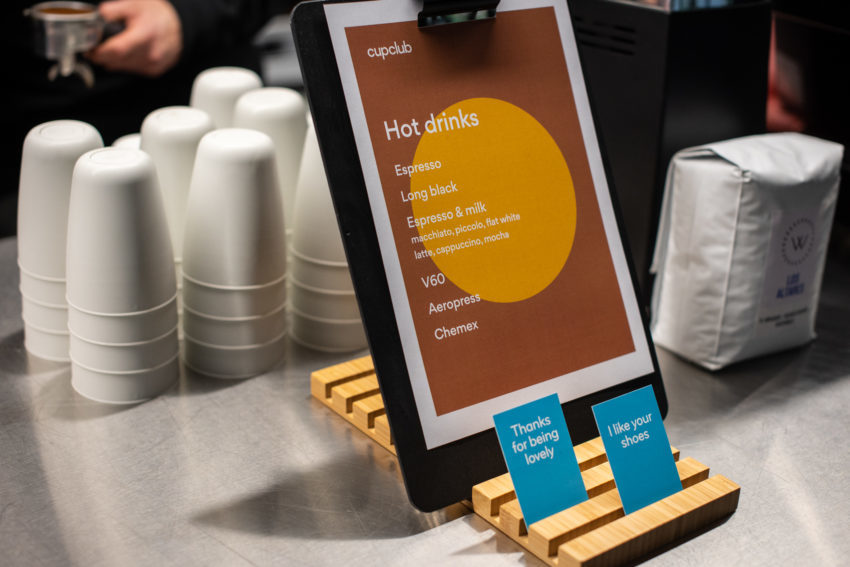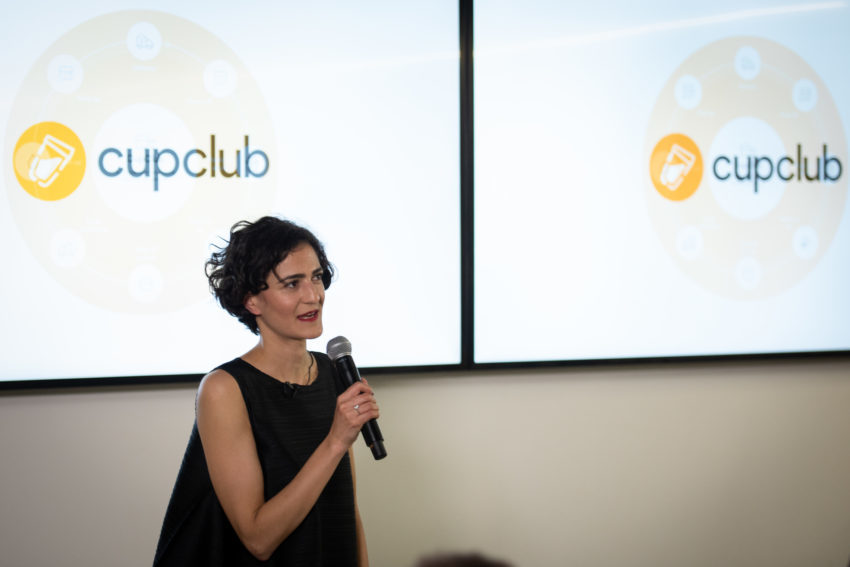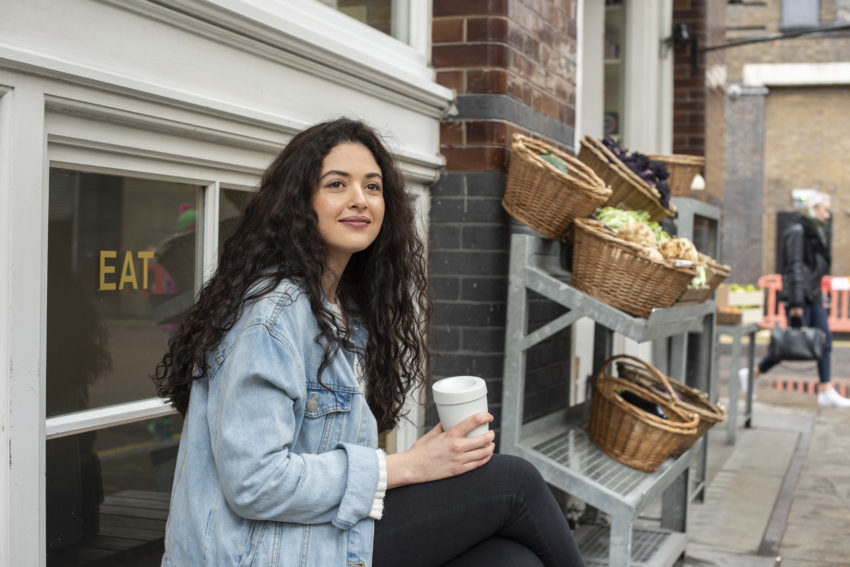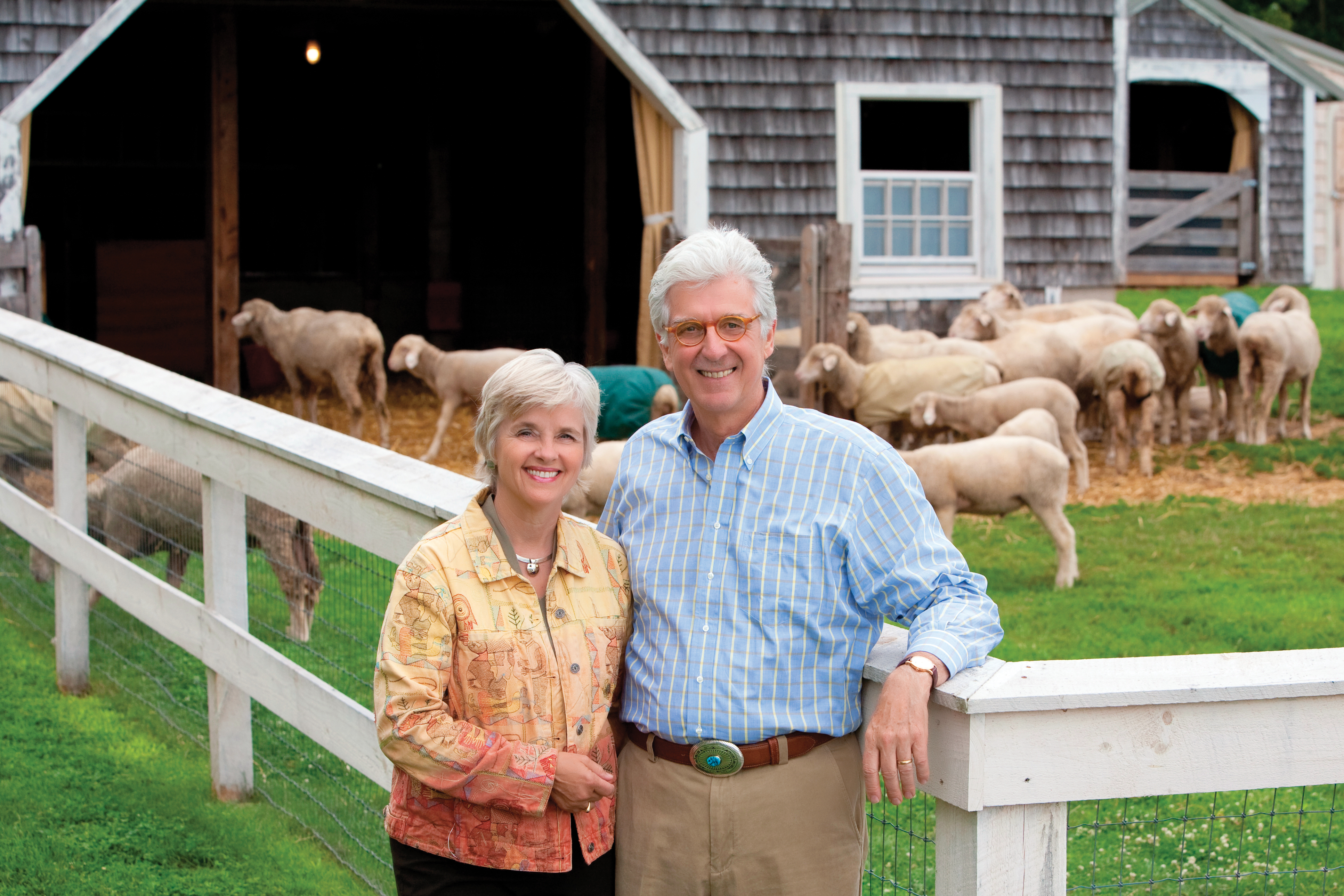Could drinking beverages from a reusable plastic cup play a crucial role in building more sustainable cities and help promote a circular economy? Safia Qureshi, CEO and founder of CupClub, believes so. Her company is launching the first of it’s kind on the global market, an innovative plastic cup. The CupClub cup, designed by Safia, will be available for takeaway beverages in regular coffee shops and can be reused multiple times.
It is a simple circular process, but of course CupClub had to set up a system in order to make everything work. Plastic is one of the “enemies” of circular economy and sustainable cities: being able to reduce – or actually reuse – the amount we use daily, would be already a success. To learn more about CupClub, today we are speaking with the CEO and Founder Safia Qureshi.
What is the story of CupClub? How did it all start?
Safia Qureshi: CupClub actually started as a research project for my design agency: I’m an architect and a designer, I have always been interested in projects with social innovation and environmental impact. The general idea was to look at large scale interventions and systems that could have the widest impact on communities and the environment. More specifically, I was interested in combining design with technology and to see how all these could be integrated into cities through a Circular Economy.
I believe architecture is quite critical in the sense of shaping the environment and determining the places where we live. The world is running towards high consumerism in every possible way and I have been thinking how to lower that.
One day I was on a train, I saw four guys holding a paper cup: they all bought the same paper cup from the very same shop, they were all identical. When we arrived at our final destination, Waterloo station in central London, they all finished their coffee and headed to the same bin to throw their empty cups. I noticed they all started the journey in the very same place, they all had a very similar products and they all had the same destination.
I found quite fascinating there is a little bit of predictability in the way people consume, especially regarding the time when they eat or drink. There are usually some windows during the day: morning, midday and evening when people would consume their beverages or their food.
While I was on the train I sketched out a simple product and I thought this could be much better compared to what people had in their hands: it was a cup that could be reused multiple times and consumers could drop into special bins. Cups from the bin would then be picked up and cleaned to be put back in the market. It is a circular process and this is how CupClub works. I wanted to allow people to take away without throwing away.
I find very interesting the fact your background is actually not in the food and beverage industry.
SQ: I’m an architect and we are system thinkers. When you develop buildings, you are putting together a lot of different things: you are assembling structures, materials, you are also managing how people will go through those spaces. You go from designing and drawing, to actually construction and implementation. You do this by working closely with clients, builders, contractors, town planners.
System thinking is very natural for an architect and this definitely helped me with CupClub. What was new to me was the whole packaging industry and also the entire technology that would track and manage everything.

In the Photo: Cups from CupClub at the demonstration and launch in London, UK.. Photo Credit: Cupclub
How do you plan to develop CupClub? At what stage of the project are you now?
SQ: We launched CupClub on April 12th 2018 in London and have also announced our first commercial partner which is one of the world’s largest Real Estate groups, Cushman & Wakefield. Our approach is to find out first what are people habits in the most dense and concentrated environments. If we can work first within these large offices like Google Campus, LinkedIn building, or any large commercial or financial building, it would be ideal. Those offices in large cities have a very high amount of food and beverages which is consumed every day in a very crowded and constrained place. To give you an example there is a building in the Canary Wharf area in London with four different cafes: they serve more than 10,000 coffees and other beverages every day. We did a lot of research before deciding those kinds of locations would be best starting point. We need first to create awareness of the product and change consumer behavior, only after that we could move into universities and retail. Cushman & Wakefield are ideal partners: they manage large office spaces and we will be launching with them in five weeks.
We are talking with high street retailers trying to understand when and how we could launch CupClub for them. It is all in the pipeline: expect to see CupClub first in London and then in other cities like Hong Kong or New York City; anywhere you have high density of people and high consumerism, that is where we are going to start.
Can you explain how does the Circular system work?
SQ: It is a very simple and circular system actually: CupClub is a B2B service, we supply packaging as a service and it is delivered directly to the retailers. We don’t work directly with consumers or end users. Once a cup has been used, consumers drop it into bins that act as collecting points and at the end of the day we collect all the cups that have been dropped. The cups are taken to our hub and our partners who are experts in the industry take care of the washing. We have set up a quality control process, and this is great from a circular economy perspective because we don’t have to set up our own facility to do the cleaning, instead we have partner who have all the facilities ready. Once the cups are all cleaned up, they are repackaged and brought back to the retailers.

In the Photo: CEO Safia Quareshi at CupClub demonstration and launch, London, UK.. Photo Credit: Cupclub
What material is the cup made of?
SQ: The cup is made of Polypropylene: we have a new design coming out soon where we try to get rid of all the extra material. Polypropylene is also a very common and recyclable kind of plastic. Our cups can be used up to 132 times and then are completely recycled.
Our ambition is to replace all those plastic cups in the future with something that is more natural, but as startup we can’t push that in the industry. We need to wait for larger organization to create the momentum to do it. Plant-based plastics exist now but it is only designed for single use. We tried it, but it did not quite work.
 In the Photo: A Cup from CupClub being used. Photo Credit: CupClub
In the Photo: A Cup from CupClub being used. Photo Credit: CupClub
Is it hard to convince people to throw the cup in the right bin?
SQ: When we did our trials, we noticed that some cups were missing. Without technology tracking we would simply lose the product and never know where it is. When we launch into retail we will know exactly who has used a certain cup, and if the product is not returned into any of our drop points within 72 hours, we will let the person know and charge him or her for that.
This actually gives you accountability while addressing the issue of littering and I believe it is a psychological thing. Right now when you finish a drink there is not a value associated with the container and there is not an incentive to take it anywhere; it is just rubbish. I think this is strange because all the waste industry is based on pieces of product like that. I believe every piece has a value and you should be rewarded for taking it to the right place, it is not just rubbish. If you put value into a product people will definitely be interested in making a couple of cents out of it. If you are not the one interested, it may become someone else’s value. This is what we are trying to do with our cups.



 In the Photo: A Cup from CupClub being used. Photo Credit:
In the Photo: A Cup from CupClub being used. Photo Credit: 





